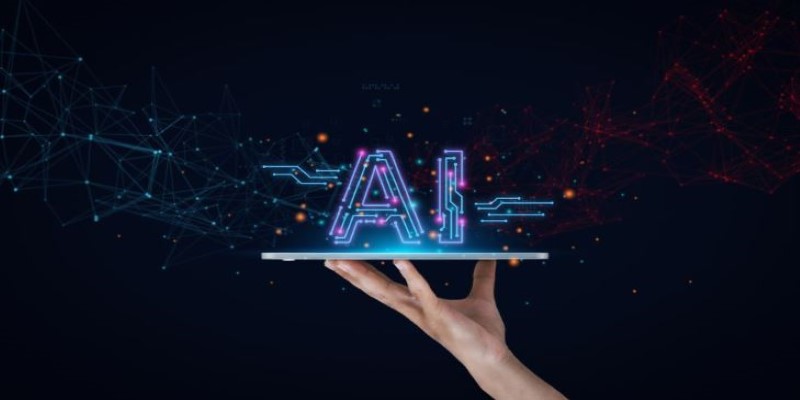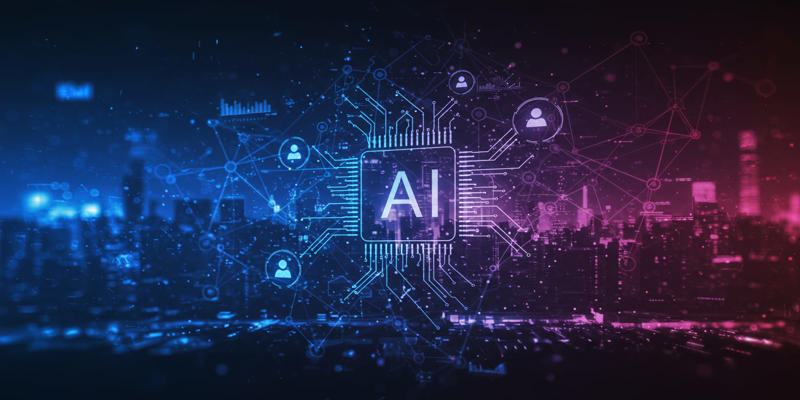When we talk about artificial intelligence, most people picture smart assistants or self-driving cars. But beneath those features lies something deeper: logic and reasoning. These are the core functions that help machines make sense of the world, just like we do when solving a problem or making a decision. While AI might seem magical on the surface, its real strength comes from structured thinking — not just storing data but using it with purpose.
Whether it's drawing conclusions, solving puzzles, or navigating uncertainty, logic, and reasoning in AI are what give it depth. They turn raw input into meaningful, often remarkable, outcomes.
Logic in AI is about structure and rules. It gives machines a framework for representing facts and deriving conclusions. At its simplest, logic involves basic true-or-false statements—known as propositional logic. More advanced systems use predicate logic, where relationships between objects and broader generalizations are represented.
Instead of hardcoding every possible situation, AI can use logic to deduce new facts. For example, if an AI knows that all birds have wings and that a sparrow is a bird, it can conclude that sparrows have wings. This kind of reasoning is essential in expert systems, where decisions are made based on rule chains.
Beyond simple logic, AI also works with more flexible systems like non-monotonic logic, which allows beliefs to be revised in light of new information. This helps machines handle contradictions or exceptions, like realizing that penguins are birds but don’t fly.
Automated reasoning tools, such as theorem provers, also stem from this logic-first foundation. These systems verify the correctness of software or mathematical proofs by applying logical rules to a given set of premises. Logic allows AI not just to store knowledge but to actively work with it — pulling out inferences and applying them in complex problem spaces.
Logic gives AI a solid skeleton, but reasoning puts that skeleton in motion. Reasoning lets AI stretch known facts to address uncertainty, incomplete data, and changing environments. It’s less about absolute truths and more about forming the best possible explanation based on the information at hand.

Deductive reasoning is the strictest form. It starts with general principles and applies them to specific situations. If all humans are mortal and Socrates is human, then Socrates is mortal. This method is used in AI systems that follow well-defined rules, where outcomes are consistent and exceptions rare.
But the real world isn't that clean. That's where inductive and abductive reasoning comes in. Inductive reasoning observes patterns and generalizes them. If an AI system encounters hundreds of black crows, it may assume all crows are black. It's not guaranteed to be true, but it's good enough for learning and making predictions.
Abductive reasoning is even more complex. It tries to identify the most likely explanation for a given clue. If a system hears thunder, it might guess it’s raining, even without seeing rain. AI uses this approach in fault diagnosis, behavior prediction, and real-time decision-making — places where complete data is a luxury.
AI blends logic with data-driven tools like probabilistic models, heuristics, and neural networks to handle ambiguity. These hybrids give machines the flexibility to "reason" in shades of gray, not just black and white.
Bayesian networks are a good example. They use probability layered with logic, letting AI update its beliefs when new information arrives. If a patient has a cough and later a fever, a medical AI will increase its probability that the patient has the flu. It’s not just cold reasoning — it’s a balance between logic and adaptability shaped by the real world.
As valuable as logic and reasoning in AI are, they come with real challenges. Logical systems tend to be brittle. A single contradiction in the knowledge base can break an entire inference chain. They also struggle to scale. As the number of facts and rules increases, the computation becomes slower and more difficult to manage.

Machine learning models, on the other hand, are built for scale. They thrive on massive datasets and perform well in pattern recognition. But they have a weakness: explainability. These models can make predictions, but they often can’t articulate why. This lack of transparency makes it hard for them to trust critical domains like healthcare or law.
This divide between logic-based and learning-based AI has sparked efforts to combine the strengths of both. One major direction is neuro-symbolic AI — a blend of neural networks and symbolic reasoning. These systems aim to deliver performance and clarity, allowing machines to learn from data while still offering understandable explanations for their conclusions.
Another difficult area is common-sense reasoning. Humans naturally know not to put metal in a microwave or cross a busy road without looking. Encoding that kind of knowledge into machines is a slow and difficult process. It demands massive, curated datasets and models tuned for subtle context.
Despite the obstacles, logic and reasoning continue to guide AI's future. They remain essential for interpretation, structured decision-making, and meaningful interaction. Without them, even the most advanced systems would operate without true understanding—reacting instead of reasoning, processing instead of thinking. The future of AI depends not just on learning faster but on thinking deeper.
Logic and reasoning in AI form the invisible framework behind every smart action a machine takes. While data fuels AI, its reasoning gives it meaning and purpose. These systems don’t just calculate — they interpret, infer, and adjust. As technology evolves, the goal isn’t just speed or automation but thoughtful, explainable decision-making. Thinking machines that can reason clearly will be the ones we trust most. In a world flooded with information, logic gives direction, and reasoning adds depth. Together, they shape artificial intelligence into more than a tool — they turn it into a thinking partner we can rely on.

From 24/7 support to reducing wait times, personalizing experiences, and lowering costs, AI in customer services does wonders

Discover how Microsoft Drasi enables real-time change detection and automation across systems using low-code tools.

Business professionals can now access information about Oracle’s AI Agent Studio integrated within Fusion Suite.

How logic and reasoning in AI serve as the foundation for smarter, more consistent decision-making in modern artificial intelligence systems

Learn AI and machine learning for free in 2025 with these top 10+ courses from leading platforms, universities, and tech experts

Learn the nine biggest benefits of using AI in retail, from personalized experiences to cost savings and smarter decision-making

The AI Labyrinth feature with Firewall for AI offers protection against data leakages, prompt injection attacks, and unauthorized generative AI model usage.

Explore surprising AI breakthroughs where machines found creative solutions, outsmarting human expectations in unexpected ways

GANs and VAEs demonstrate how synthetic data solves common issues in privacy safety and bias reduction and data availability challenges in AI system development

Discover ChatGPT, what it is, why it has been created, and how to use it for business, education, writing, learning, and more

remove duplicate records, verification is a critical step, SSIS provides visual tools

Know how computer vision transforms sports with real-time player tracking, performance analysis, and injury prevention techniques